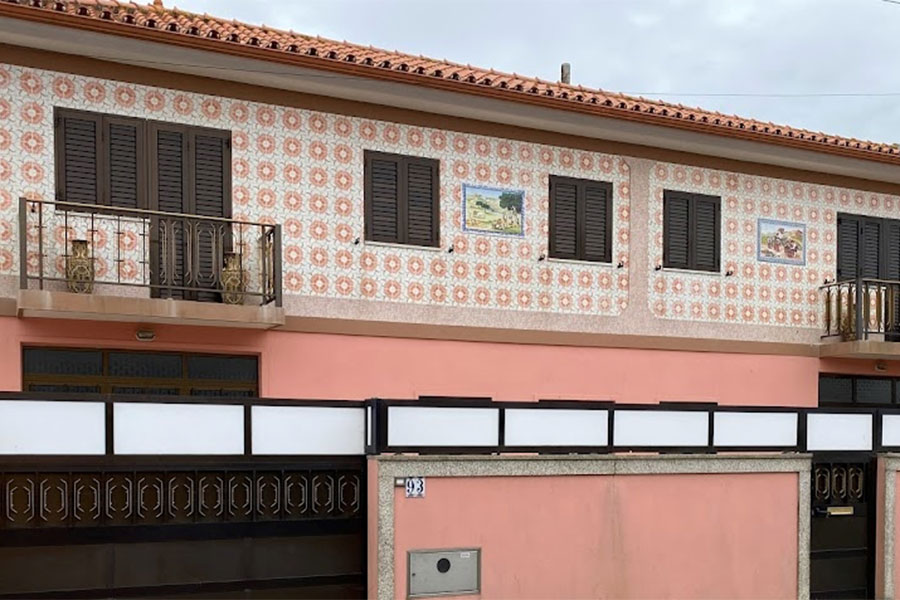Debbie Pugh Jones takes a two hour flight to deserted beaches in authentic Portugal
A LONG weekend catching up with my son and his dog, who are touring Europe in a van, led to me discovering an unspoilt area of Portugal just a two hour flight from Bristol.
I found it when looking for cheap accommodation under a 30-minute drive from Porto airport and what a find. Five nights’ accommodation in the clean and spacious Apartment Póvoa de Varzim, in the tiny coastal village of Aguçadoura, cost under £250.
The apartment was five minutes’ walk to a wide deserted beach sporting gleaming white sand.



Behind the sand dunes is a boardwalk which is on part of the Coastal Portuguese Camino de Santiago route.
The route was created by pilgrims wanting to visit the Cathedral de Santiago de Compostela where, it is said, the remains of the apostle St James the Greater were found in 1075. The Camino de Santiago and all its routes are now internationally recognised as one of the greatest historic walking trails of the world. The coastal route takes about 12 days to cover the 265 km from Porto to Santiago. The only tourists we spotted in Aguçadoura were passing along this route.
Aguçadoura is the perfect location for a long weekend’s gentle flat walking along kilometres of wooden boardwalks through flowered sand dunes, pavements and quiet tarmac roads taking in the wild Atlantic beauty of the sea alongside. The parish is recognized for its beaches: Aguçadoura Beach, Codicheira Beach and Barranha Beach, popular with surfers.



Surprisingly, there are virtually no cafés directly on this stretch of the Camino. Heading south down the boardwalk is an easy 45 minute stroll to the nearest restaurant Praia do Mestre which serves the most wonderful Portuguese speciality Francesinha. It packs wet-cured ham, linguiça (a Portuguese sausage), and steak inside two slices of thick bread which is covered with melted cheese and a special tomato and beer sauce. It is a bit like the Portuguese version of Lasagne.
Many other restaurants can be found a 15 minute drive away in Póvoa de Varzim which also has wonderful, but busier, beaches. I can recommend the Nautico snack bar right on the beach. It’s close to the pretty Póvoa de Varzim harbour where we took a stroll.
Much of the land in the area is on former arid sand dunes and fertilisation of its soils was done through generations of farmers by gathering sargassum seaweed from the ocean to fertilize the infertile soil. This can be seen today with farmers laying seaweed out at the back of the beaches to dry out before being gathered up and stored in mini stacks.




Green houses dominate Aguçadoura and the parish is renowned for its garden crops. Some of the houses have the most beautiful gardens and there was a real contrast in properties from derelict cottages to houses clad with colourful tiles to modern-day glass fronted homes.
There is not a lot to the north of Aguçadoura but we drove as far at Praia de Ofir where we found interesting structures protecting the dunes from the sea. The beach was lined with large geotubes made of a woven polypropylene and hydraulically filled with a mixture of sand and water. They looked like large pillows and actually serve this purpose when sitting on the beach and using them as a readymade back rest.
The weekend was over too soon and we spent a day exploring Porto before heading back to the airport. Porto is an interesting riverside city but full of tourists and, for me, I was delighted to have chosen to stay in the authentic village of Aguçadoura to have experienced a truly authentic part of Portugal.
Find out more
For trips to Portugal, long and short, call our Silver Travel Advisors on 0800 412 5678. Take a look at Classic Collection Holiday and Sovereign Luxury Travel too.











